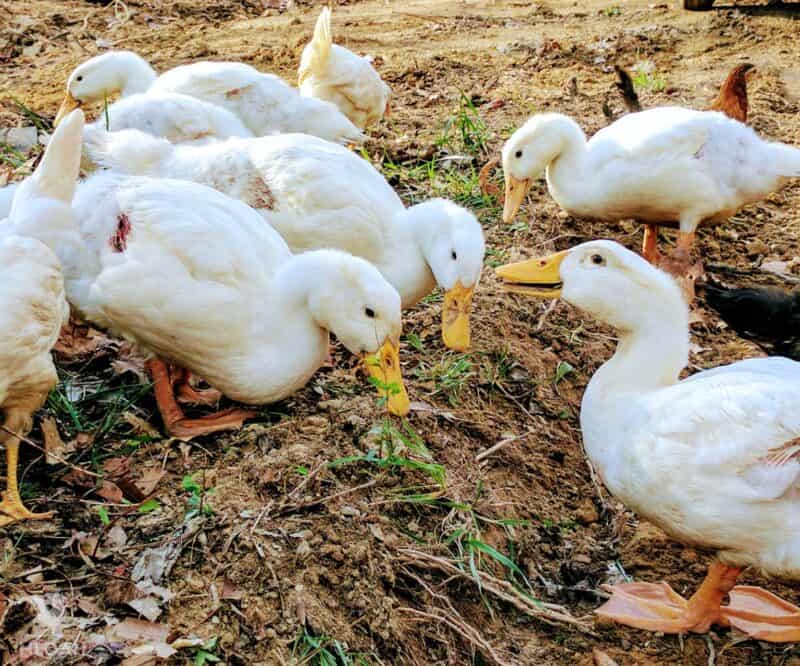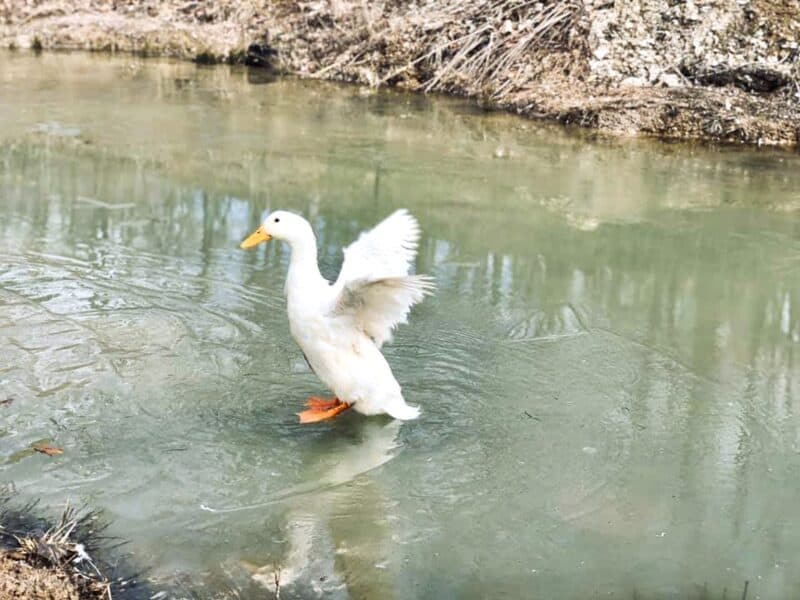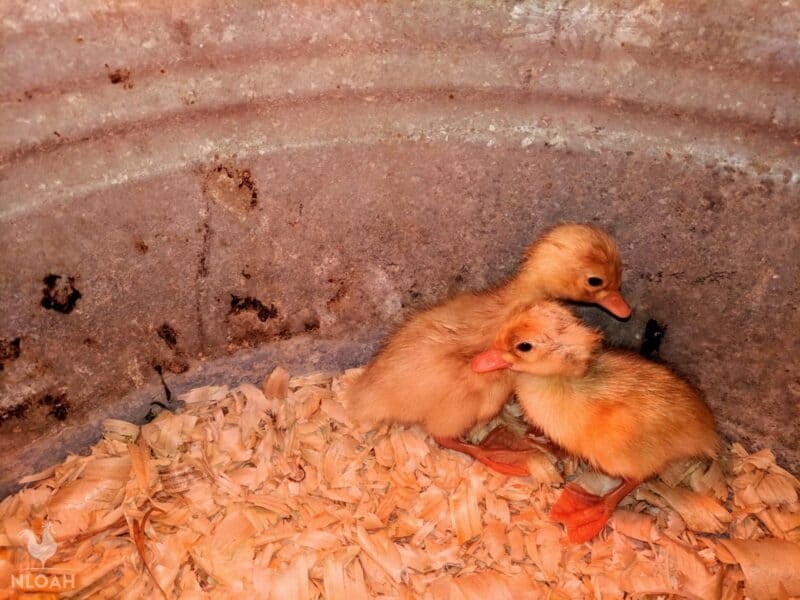If you want to raise ducks, keeping the right ratio of males to females is crucially important both for the well-being of your flock and your own sanity.

If you want lots of eggs, you’ll need plenty of females, but getting a good return of meat is best done with a flock that has more males.
Even if you just want a hobby flock to call your own, if you have the wrong ratio of males to females, there’s going to be trouble…
Makes sense, right? The issue is that telling males from females is anything but easy.
Most duck breeds aren’t autosexing at birth, and further complicating matters is the fact that many males and females look identical when they are fully grown! It’s enough to make you feel a little crazy until those eggs start coming, then you’ll know for sure.
But you don’t have to wait that long, at least if you have Pekins. Keep reading, and I’ll give you five proven methods for sexing the Pekins in your flock.
| Trait | Females | Males |
| Tail feathers (in adulthood) | 1-2 curled tail feathers | No curled tail feathers |
| Quacking | High-pitched | Low-pitched |
| Weight | 8+ lbs. | 7 lbs. max |
| Sex organs | Penis | No penis |
| Behavior | Males typically at the head of the pack | Females follow the males |
| Size | Taller and bulkier | Shorter and more slender |
Tail Feather
One of the most reliable and simplest ways to tell male from female Pekins is by looking at their tail feathers.
Male Pekins usually have one or two upwards curling tail feathers once they have their full adult plumage. This is commonly referred to as the drake feather, and is a sexual trait found on many ducks.
This indicator takes just a little bit of practice and observation to detect, but once you start comparing the ducks in your flock, you’ll quickly learn to recognize it.
The only downside is that not all males will have an obvious feather, and every now and then, they can fall out or get pulled out, meaning they’ll blend in with the ladies.
Nonetheless, this is a great method to use especially once your ducks are leaving adolescence behind.

Quack
Another easy method for sexing your Pekins is through their voices. Males and females have distinctly different quacks, and depending on when they start quacking you might be able to tell them apart as early as 3 or 4 weeks old.
The rule is that hens have a high-pitched, loud and very obvious quack that sounds like a stereotypical duck quack. Drakes, in sharp contrast, have a low, raspy almost whispery quack. When they are young, it might even resemble a gurgling or coughing sound.
I’ve heard some people make the joke that it sounds like they have a smoker’s quack, and as funny as that is it’s actually a pretty good descriptor!
Just remember that the boys tend to sound low and husky, while the females sound high and clear. This method rarely fails.
Size
The boys are bigger than the girls, as with all ducks. Fully grown, a male Pekin will usually tip the scales around 8 pounds at least, and some can grow beyond that size.
Females are significantly lighter, rarely weighing more than 7 pounds and many weigh a bit less. Busting out the scale and weighing your ducks methodically is one way to start sifting the boys from the girls if other methods fail.
Also, look for differences in stature too. Male Pekins are notably taller and tend to be bulkier. Females are shorter and usually try to make themselves appear smaller, not holding their neck and head quite as high most of the time.

Behavior
If the above three methods for sexing your Pekins fail, we’re forced to get into more… esoteric methods.
As with all ducks, the behavior of drakes and hens is significantly different, with drakes being near the top of the pecking order, generally throwing their weight around, and being assertive.
When the flock is moving somewhere, drakes are typically at the lead. Hens are natural followers and tend to reside lower down on the pecking order with the exception of the drake’s chosen mate which will often have superiority over the other females.
Here’s a tip that can help: assuming they aren’t squabbling over mating rights or fighting over food, you’ll usually find drakes squaring off with each other or picking and pecking at females trying to get their attention.
Vent
The last-ditch method for sexing your Pekins is one that you should not attempt unless you have special training because it can seriously injure your ducks.
It’s possible to examine the sexual organs of the ducks directly by spreading open their vent once they’ve reached a certain age, but the younger you attempt this the worse the consequences can be.
Males will sometimes show their screw-shaped penis if you hold them upside down and spread their vent apart gently. Females won’t. Again, this is error-prone since sometimes you just won’t be able to see the penis of a male, and can subsequently mistake him for a “her.”
Even with adult ducks, any mishap is likely to result in a serious injury. Don’t try this unless you have training, or you have to know the sex of a given duck let your vet do it.

Do Drakes and Hens Look Different as Ducklings?
No, unfortunately, but good thinking.
As I mentioned above at the beginning of this guide, Pekins are not autosexing upon hatching, with both having a typical bright yellow coloration assuming they have the expected white plumage.
You’ll just have to use one of the other methods above to figure out who’s who!

Tom has lived and worked on farms and homesteads from the Carolinas to Kentucky and beyond. He is passionate about helping people prepare for tough times by embracing lifestyles of self-sufficiency.
